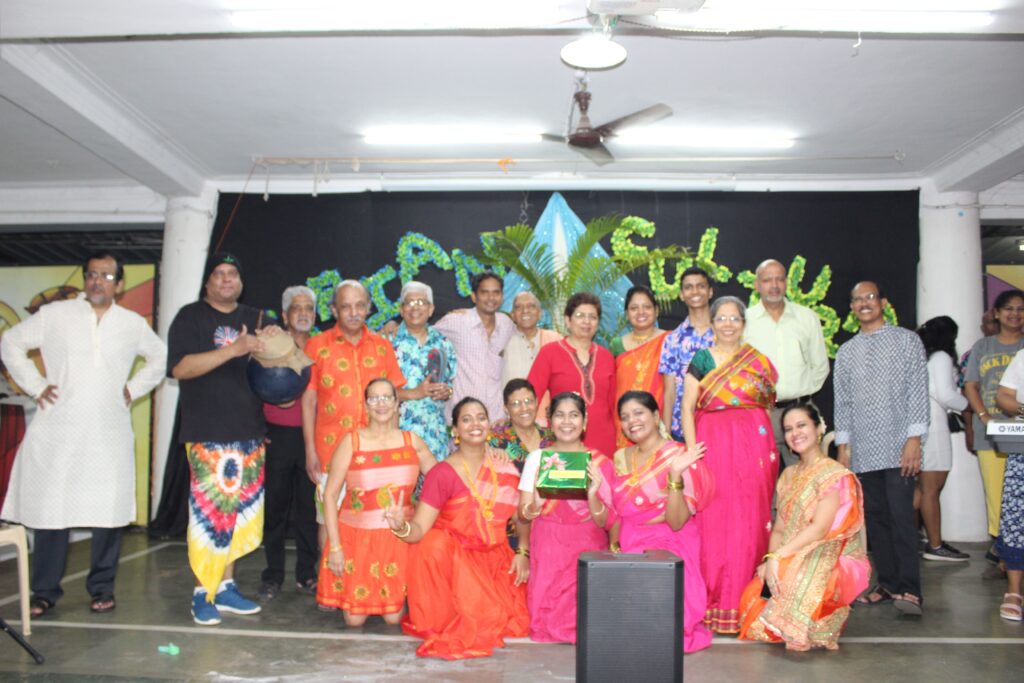
As part of the Rosary Church Parish Feast Celebrations – Cultural Day, we were part of the evening’s celebration of Unity amidst diversity on Saturday. 8th October 2022.
Over the years, our city has evolved into a cosmopolitan hub, around which life sprouts in myriad colours of varying hues and shades.
And we were there to show some of those shades and colours of a community whose culture is steeped in historical facts, and whose culture is a rainbow of rites, rituals and revelry.
The East Indians – Now, who exactly are the East Indians and why such a name ? After all, don’t we find them on the West and East. Perhaps, history could help resolve this confusion, this misinformation. The East Indians – history reveals – are the original Catholic Community of the regions around Bombay, Salsette and Bassein – hence their culture is basically Indian, more specifically Marathi and of course a generous sprinkling of Western traits.
History also tells us, that this Community owes its origin, not so much as to natural growth – did it exist earlier ? No. Then how did the Community come about ?
It was due to a change of Religion – but how did this happen ?
Well, the Portuguese landed in North Konkan in the year 1534. Why did they come ? They came to trade in spices… but their clergy soon realised, they were in the land of the infidels – who needed to be converted, evangelised.
And that is when the Portuguese Christian Missionaries converted our ancestors to the Christian faith. And so with a change of Faith, followed a change of names and surnames.
However, earlier in these areas lived people of diverse cultures, creeds, castes and social ranks. The Portuguese managed to mould these different peoples into one homogenous society who were held together by their Christian Faith – glue that bound was Christian Faith.
Besides evangelisation – the Christian Missionaries were also concerned about the social upliftment of its new converts – and so to ensure this they initiated the process of education – and so beside Churches came up Schools – a feature we observe even today. Thus, the local Catholic community received Education because of the Portuguese missionaries.
History tells us that in the year 1661, the Portuguese ceded Bombay to the English – the new masters were now the English.
The English soon realised that if they were to control these areas, they must develop the areas, Bombay Harbour – roads and bridges, a fast mode of transport – they needed a workforce who would understand their plans – people with an educational background who could man the administrative and clerical tables of their set up. This is when the new local Christians, educated earlier by the Portuguese found jobs in this new English set up.
As trade and commerce between the English and India increased a multinational company by the name “The East India Company” found its way on Indian soil, playing a major role in the plans of the English masters.
Going back in time, we learn that there were descendants of an old Christian Community in these areas. Also, Christians of other parts of India lived in Bombay.
The newly converted local Christians were at a loss as to identify themselves – what name should they be known by….. And hence in order to distinguish themselves from the other Christians, they adopted the name East Indians – this was around 1887, which coincided with the Golden Jubilee of Queen Victoria.
This evening we would like to showcase to you a culture that is in touch with its traditional image.
And what better traditional image can we enact than the traditions that centre around an East Indian wedding ceremony. A ceremony that gets the entire village or settlement involved – a truly community affair.
We have the Moya Ceremony followed by the Saivar ceremony or the Umbrache pani.
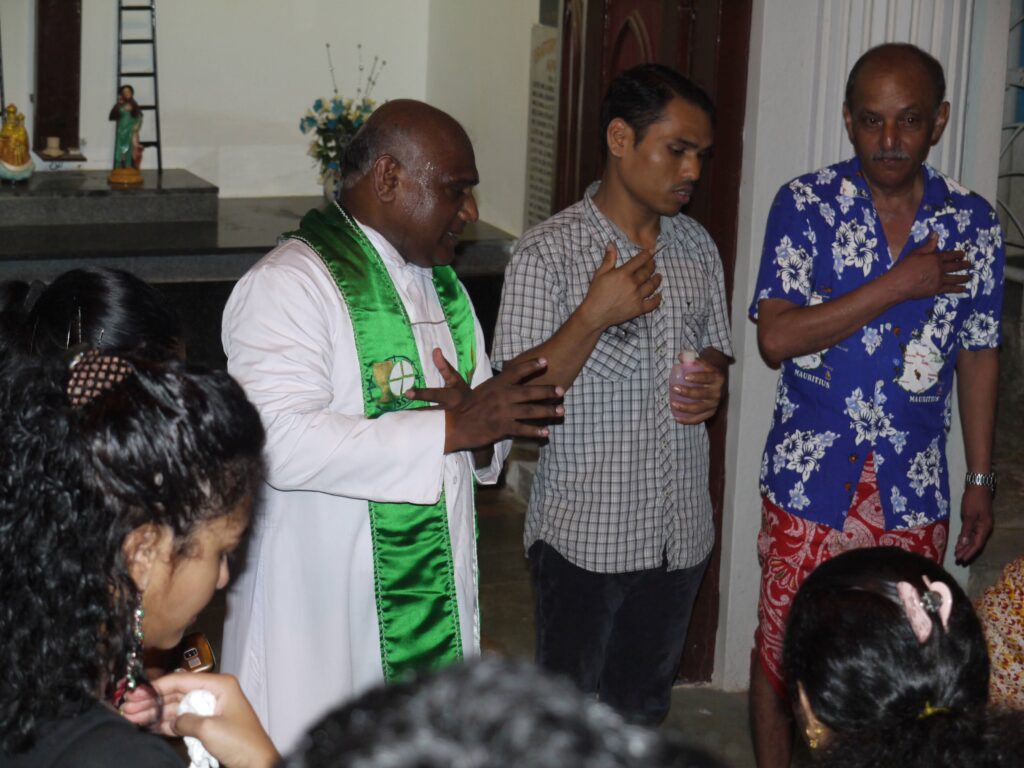
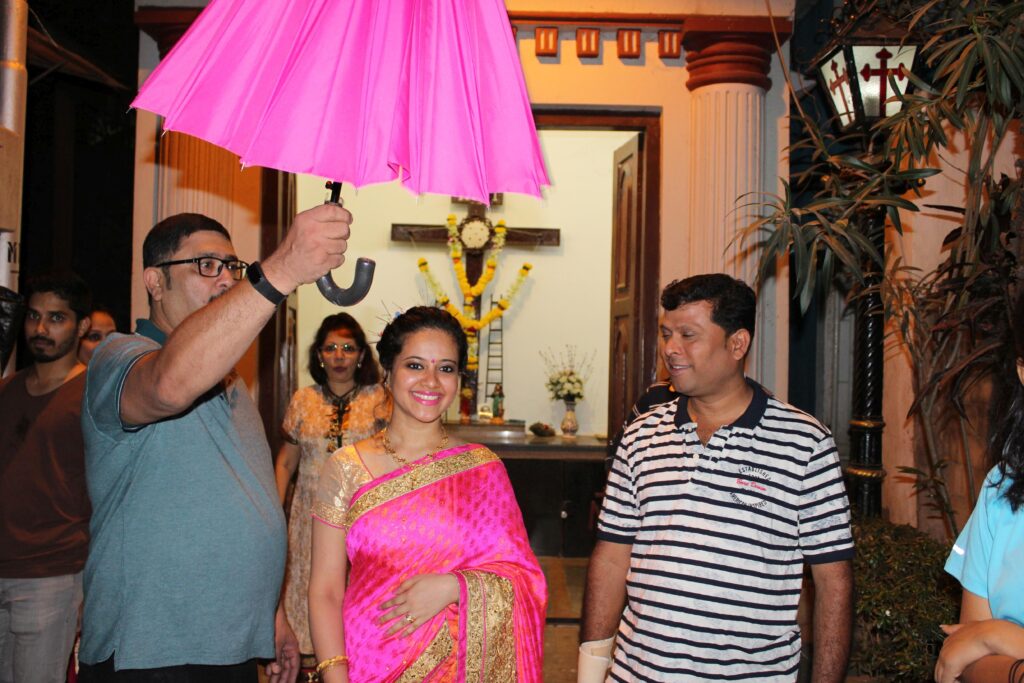
The Portuguese did instill a deep sense of faith and communion with the Almighty with the early converts And this faith has come down the ages, hence these ceremonies always began with prayers at the Village Cross / Chapel / Grotto.
Here the faithful will pray for the couple to be married, for the new relationships that would arise from this union and for the welfare of all.
Moya ceremony – Moya is also known as the shaving ceremony. It is performed on the wedding eve before dinner. It marks the groom’s first shave (earlier custom/ tradition). Flowers are dipped in rose water and smeared over the face of bride. The Mama and Godparents give their respects to the bride/groom respectively. The Mama gives the barber his ‘Dasturi’ (fee) by giving coconut and flowers.
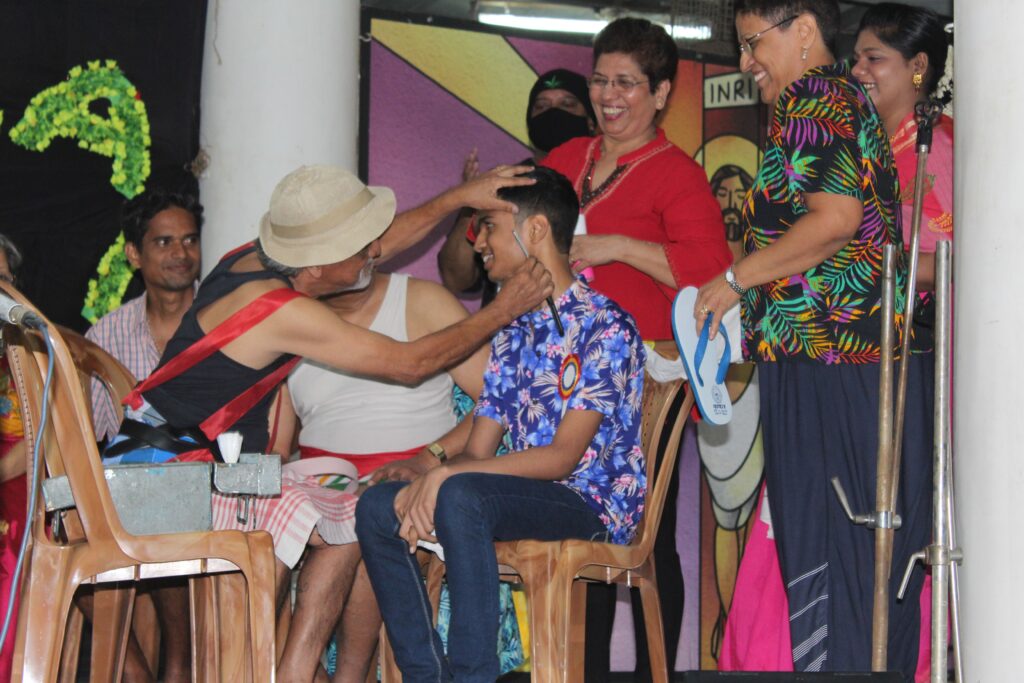
Soopra– Lynette holds each item in her hand while Lyra explains the items in the Soopra – Coconut, Betel nuts, Betel Leaves, Mango leaves, Rice, Marigold flowers.
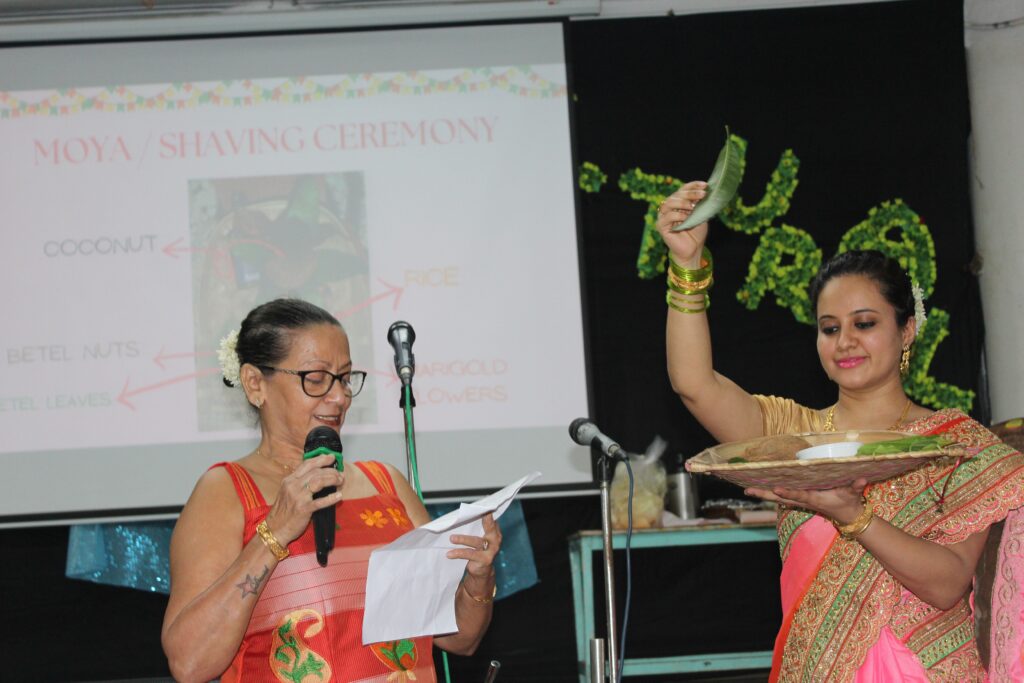
Saivar Ceremony – The Saivar ceremony is when we go to get the Umbaracha Paani. It is performed by unmarried girls carrying ‘brass khalshis’, singing and dancing till they reach an ‘Ambar’ (Mango) tree. They pluck the leaves and proceed to the Village well. Umbar is the wild fig tree that grows on the walls of the well. The water collected is now called ‘Umbracha Paani’. In certain communities of the culture, people recite prayers at the well for the souls. This water is carefully stored for the ‘Purification Bath’ on the morning of the wedding.
The kalshi is decorated with Mango leaves and the mouth of the khashi is covered with a coconut to keep the water safe of the purificatory bath on the wedding day.
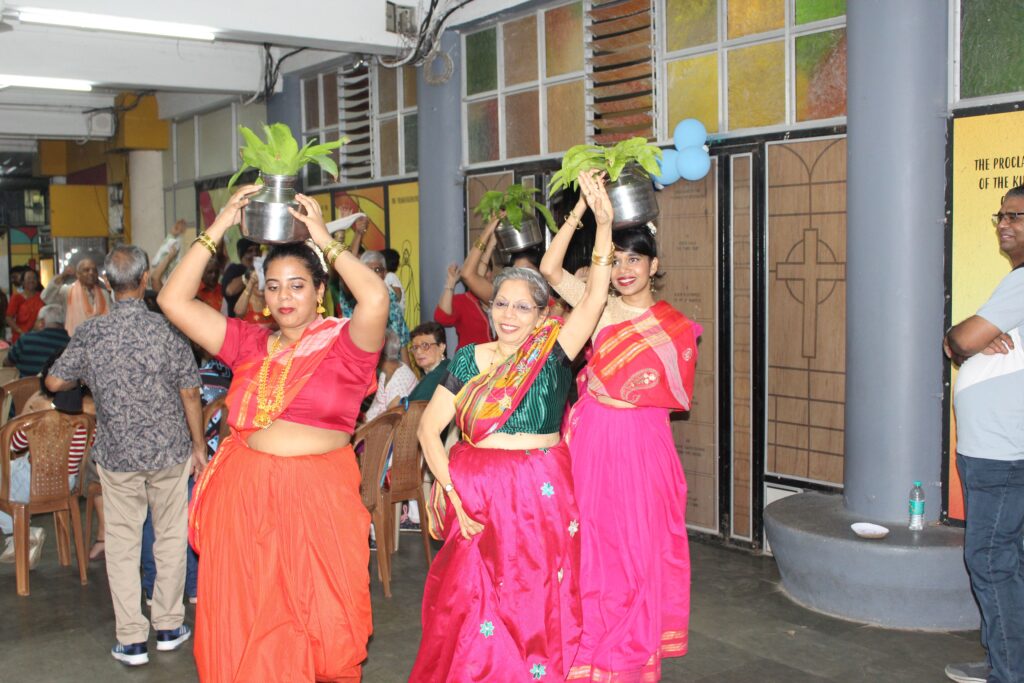
East Indian Delicacies – The various East Indian delicacies – Varias, Fugias, Papris and Khimad are shown and explained to the audience. The same are also shared with the audience.
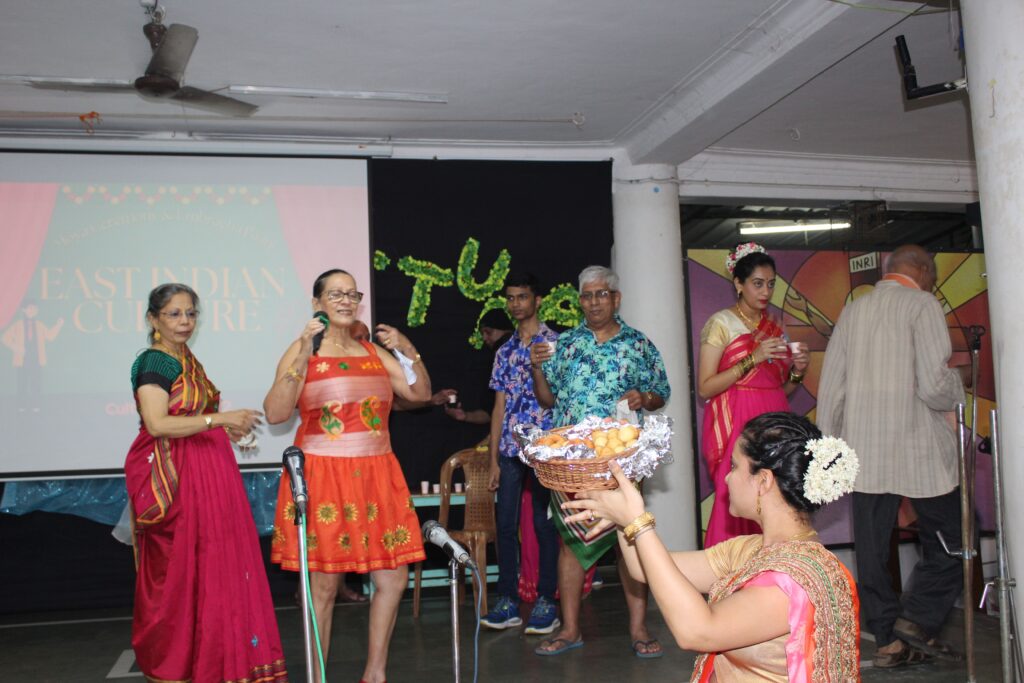
Photographs : Courtesy – Stanislaus Baptista
